Record Reviews
8 Reviews Found. Use search to find more reviews or follow the links in the review text.
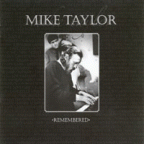  | NEIL ARDLEY ~ MIKE TAYLOR REMEMBERED
DUSK FIRE 103 (Barcode: 5065001032011) ~ UK ~ Jazz
Recorded: 1973 Released: 2007
The short and tragic life of pianist / composer Mike TaylorFind albums by this artist, an eccentric genius fallen victim to mental illness / drug abuse, which proved self-destructive and led to his death at the age of 29, is surely worthy a script adaptation for a Martin ScorseseFind albums by this artist movie. Sometimes referred to as “the Syd BarrettFind albums by this artist of British Jazz”, Taylor had close ties with a relatively small group of musicians, like Graham BondFind albums by this artist and the members of his Graham Bond OrganizationFind albums by this artist, which included Jack BruceFind albums by this artist and Ginger BakerFind albums by this artist – soon to be founders of CreamFind albums by this artist. Many people will be surprised to learn that three songs co-written by Ginger and Mike appear on Cream’s Wheels Of FireFind albums with this title album (“Pressed Rat And Warthog”, “Those Were The Days” and “Passing The Time”). Another one of his superb songs – “Jumping Off The Sun” – was recorded by ColosseumFind albums by this artist and appears on several of their albums.
Although known intimately by very few people at the time, the legend lives on and periodically the flame of interest is rekindled among the modern British Jazz fans, like in the case of reissue of his only two existing recordings: PendulumFind albums with this title and TrioFind albums with this title. Even fewer people are aware of the spectacular tribute album recorded by Taylor’s musician friends three years after his death. Recorded under the musical direction of another British Jazz legendary figure, composer / arranger / bandleader Neil ArdleyFind albums by this artist, who discovered Taylor’s genius immediately and scored some of his compositions for the New Jazz OrchestraFind albums by this artist when Taylor was still alive. Unfortunately the concert, which was to feature NJO and Mike’s trio never materialized, since Taylor (already very ill at the time) simply missed the gig. Nevertheless Ardley continued to use Taylor’s music as part of the regular NJO repertoire and suggested to Denis PrestonFind albums by this artist, owner of the legendary Lansdowne Studios in London, where most of the pivotal modern British Jazz was recorded, to produce a tribute album to Mike Taylor’s musical genius. Preston, who recorded the two Taylor albums, needed no persuasion and funded the complex and costly project with no hesitation, considering it a most appropriate gesture.
Ardley assembled a group of 20 musicians to record this project, sharing the scoring of the music for a large ensemble with others, who were close to Taylor and new him well, like Howard RileyFind albums by this artist, Barbara ThompsonFind albums by this artist and Dave GellyFind albums by this artist. One of the tracks is based on a previously unreleased Taylor quartet recording, with the ensemble overdubbed on top of the original recording, which makes Taylor’s participation in this project almost “in person” as well as “in spirit”. The list of the participating musicians reads like the who’s who of modern British Jazz and includes among others: Ian CarrFind albums by this artist and Henry LowtherFind albums by this artist on trumpet, Chris PyneFind albums by this artist and David HorlerFind albums by this artist on trombone, Ray WarleighFind albums by this artist and Stan SulzmannFind albums by this artist on saxophone, Peter LemerFind albums by this artist and Alan BranscombeFind albums by this artist on piano, Chris LaurenceFind albums by this artist and Ron MathewsonFind albums by this artist on bass, Jon HisemanFind albums by this artist on drums and of course the divine Norma WinstoneFind albums by this artist on vocals. I can’t think of a more appropriate tribute than this one, full of love, dedication and music genius by all the people involved.
Considering the fact that this album combines the genius of Taylor’s Jazz composition with the genius of Ardley’s Jazz scoring / arranging, we get (in mathematical terms) a genius squared result – a rare event indeed. Recommending this album would be somewhat similar to recommending someone to read some Joyce or see a van Gogh – completely superfluous. I’m sure you get the drift by now!
| | | CD 1 Remastered Essential Recommend To A Friend |
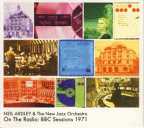 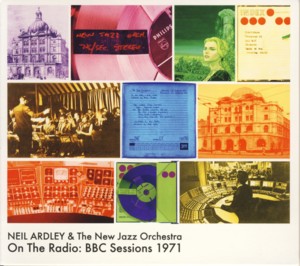 | NEIL ARDLEY / NEW JAZZ ORCHESTRA ~ ON THE RADIO: BBC SESSIONS 1971
DUSK FIRE 115 (Barcode: 5065001032516) ~ UK ~ Jazz
Recorded: 1971 Released: 2016
This is a wonderful archival album from the seemingly bottomless vault of the BBC recordings, which presents two sessions led by British composer / bandleader Neil ArdleyFind albums by this artist. The first session (six tracks) presents the full glory of the New Jazz OrchestraFind albums by this artist (a.k.a. NJOFind albums by this artist) led and conducted by Ardley and the second session (one track) presents a suite-like composition performed by a small Jazz ensemble, which also includes a string section and electronics. The lineup of the New Jazz Orchestra includes the crème de la crème of the British Jazz players at the time: trumpeters Nigel CarterFind albums by this artist, Bud ParkesFind albums by this artist, Harry BeckettFind albums by this artist, Ian CarrFind albums by this artist and Henry LowtherFind albums by this artist, trombonists Derek WadsworthFind albums by this artist, Robin GardnerFind albums by this artist and Michael GibbsFind albums by this artist, tuba player Dick HartFind albums by this artist, saxophonists Don RendellFind albums by this artist, Barbara ThompsonFind albums by this artist, Brian SmithFind albums by this artist, Dave GellyFind albums by this artist and Dick Heckstall-SmithFind albums by this artist, keyboardist Dave GreensladeFind albums by this artist, guitarist Clem ClempsonFind albums by this artist, bassist Jeff ClyneFind albums by this artist, drummer Jon HisemanFind albums by this artist and percussionist / vibraphonist Frank RicottiFind albums by this artist. The small ensemble includes several NJO members and also features bassist Barry GuyFind albums by this artist and the man in charge of the electronic sounds Keith WinterFind albums by this artist.
For listeners familiar with the NJO recordings the music presented here will not be unanticipated, as it follows the pattern presented on their studio recordings, which is based on intricate and lavish orchestral arrangements and excellent solos by the orchestra members. The live sound and the raw power of the twenty piece orchestra are of course irresistible and illustrate the supremacy of orchestral music over small ensembles as far as the scale of possibilities is concerned. The orchestra performs two compositions by the lamented pianist / composer Mike TaylorFind albums by this artist, who was already deceased when this music was recorded. Another pleasant surprise is the inclusion of a composition by the legendary Jack BruceFind albums by this artist, who played in the earlier lineup of the orchestra. The presentation of the tunes by the no less legendary Humphrey LytteltonFind albums by this artist is the proverbial cherry on the top.
The suite-like piece marks the beginning for Ardley´s interest in electronic music, which started when he met Keith Winter a year before this music was recorded. His future recording will feature synthesizers of course but this early, both technologically and conceptually, meeting between electronic and acoustic sounds is truly fascinating and innovative, especially since it also features a string section.
Overall this album is an invaluable historical document of the time and of the British Jazz history, and well deserved thanks go to Peter MuirFind albums by this artist, the man behind the Dusk FireFind albums on this label / Market SquareFind albums on this label labels and to Dave Gelly for the informative liner notes and his first hand experiences. This is an absolute must to all British Jazz connoisseurs, and in fact to all Jazz lovers around the world, especially the young musicians, who should be aware of how much can be learned from music made in the past. Not to be missed!
| | Updated: 23/05/2018Posted: 31/05/2017 | CD 1 Digipak Remastered Recommend To A Friend |
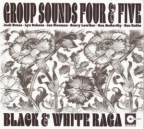 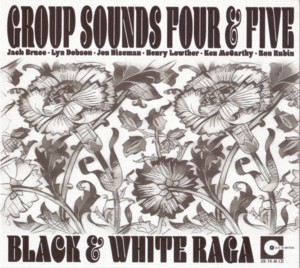 | GROUP SOUNDS FOUR & FIVE ~ BLACK & WHITE RAGA
JAZZ IN BRITAIN 14 (Barcode: 5060774190128) ~ UK ~ Jazz
Recorded: 1965 - 1966 Released: 2021
This is an archival album by the British Jazz quintet Group Sounds FiveFind albums by this artist, and quartet Group Sounds FourFind albums by this artist, both offspring of the quintet founded by trumpeter Henry LowtherFind albums by this artist and saxophonist Lyn DobsonFind albums by this artist, which also included pianist Ken McCarthyFind albums by this artist, bassist Ron RubinFind albums by this artist and drummer Jon HisemanFind albums by this artist. The quartet includes Lowther, Dobson, Jack BruceFind albums by this artist on bass and Hiseman. The album presents four tracks by the quintet and three tracks by the quartet, all taken from radio broadcasts. The material includes original compositions by Bruce, Dobson and McCarthy, a couple of standards, a piece by John ColtraneFind albums by this artist and a piece by Mike TaylorFind albums by this artist.
The music is everything one might expect to hear at the time by British Jazz musicians, who were defining the modern British sound, still very much entangled into the Bebop tradition on one side, and searching to find their own voice on the other. There is enough originality and innovation herein to make it a fascinating historic document of the era.
Of course the three quartet tracks with Bruce are especially interesting, both because his rare appearance in the strict Jazz idiom and his very open, almost free composition included here, which is a preamble to his wonderful “Things We LikeFind albums with this title” album recorded a couple of years later. The quintet tracks are slightly less challenging, but the title track, which lasts for twelve minutes, is a masterpiece in every respect.
The personal performances are stellar, including Hiseman, who takes a long solo both with the quartet and the quintet. Although the quintet offers a “bigger” sound, the piano is somewhat under-recorded and lost in the mix, which is a pity. But the overall sound quality however is excellent and the music sounds bright and clear.
Overall this is the most interesting CD release by the new Jazz In Britain label so far, hopefully pointing in the right direction. For British Jazz fans, who wish to learn more about the birth of the unique character of late 1960s sound, which revolutionized the idiom, this album is the “missing link” and an absolute must have.
| | Updated: 23/07/2021Posted: 16/04/2021 | CD 1 Digipak Recommend To A Friend |
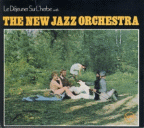 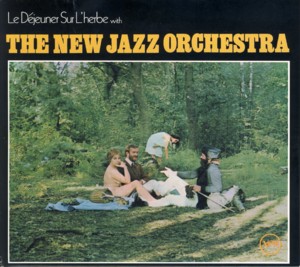 | NEW JAZZ ORCHESTRA ~ LE DEJEUNER SUR L`HERBE
DUSK FIRE 110 (Barcode: 5065001032981) ~ UK ~ Jazz
Recorded: 1968 Released: 2014
This is the second and also the last formal album by the seminal British Jazz Orchestra called New Jazz OrchestraFind albums by this artist or NJOFind albums by this artist for short. Directed by the legendary composer / arranger / bandleader Neil ArdleyFind albums by this artist the NJO was probably the most important singular British Jazz ensemble, which shaped the way British and European Jazz developed in the late 1960s.
Despite the fact that the number of people, who are familiar with this epic recording, will hardly fill up an average British pub, it is still one of the best and more importantly revolutionary Jazz albums of all times, certainly as far as British Jazz is concerned. The fact that the album, which was released on LP in 1969 and almost immediately after disappeared from the shelves, had to wait for 45 years for its debut CD reissue confirms its anonymity and obscurity. And yet for the handful of British Jazz enthusiasts it always was the magnum opus of the British Jazz resurgence, when the music emerged for the first time as a truly new Art form, related to but fully independent from the American Jazz tradition.
Why "new"? The origin of the name is not entirely clear but NJO was new indeed; it included a new generation of British Jazz musicians, which arrived on the scene mostly in the 1960s and had very little in common with the older "swing" generation, which completely dominated the British scene up to that period, and which was entirely immersed in the American tradition, strengthened by the presence of American bands in Britain during the WWII period. Several Jazz Big Bands and orchestras were active on the British scene since the 1920s and well into the 1960s, some quite excellent and even extraordinary, but those limited the artistic scope to imitating the trends originating across the big pond. The list of British composers / bandleaders includes Ted HeathFind albums by this artist, Syd LawrenceFind albums by this artist, John DankworthFind albums by this artist and numerous others.
By the time this album was recorded the NJO was about five years old. In 1965 it recorded its debut album called "Western Reunion London 1965Find albums with this title", which beautifully sums up the first phase of its activity, when the orchestra performed mostly new arrangements of American standards, but the overall sound of the band was already quite unique and stunning. This album was recorded by the second incarnation of the NJO, which included Jack BruceFind albums by this artist on bass (who was already a member of CreamFind albums by this artist at the time), with the regular bassist Tony ReevesFind albums by this artist taking the position of the album´s producer. The rest of the band included: trumpeters Derek WatkinsFind albums by this artist, Harry LowtherFind albums by this artist, Harry BeckettFind albums by this artist and Ian CarrFind albums by this artist, trombonists John MumfordFind albums by this artist, Michael GibbsFind albums by this artist, Derek WadsworthFind albums by this artist and Tony RussellFind albums by this artist, tuba player George SmithFind albums by this artist, saxophonists Barbara ThompsonFind albums by this artist, Dave GellyFind albums by this artist, Jim PhilipFind albums by this artist and Dick Heckstall-SmithFind albums by this artist, vibraphonist Frank RicottiFind albums by this artist and drummer Jon HisemanFind albums by this artist.
The album presents eight compositions, five of which are originals composed by NJO members or other British Jazz musicians / composers of the new generation; those are Neil Ardley, Howard RileyFind albums by this artist, Mike TaylorFind albums by this artist, Michael GarrickFind albums by this artist and Michael Gibbs. Two modern American Jazz standards, one by John ColtraneFind albums by this artist and another one by Miles DavisFind albums by this artist are also present, but their arrangements are stunningly removed from the original versions known to most Jazz listeners. The remaining composition is by the French composer of Polish / Jewish origin Alexandre TansmanFind albums by this artist, whose composition receives another highly unusual treatment.
The album emerges triumphantly as a masterpiece of composition, arrangement, performance and intelligent music making, all those on top of its being a first of its kind and a beacon for generations to come. Many other superb Big Band / Orchestral British Jazz recordings will follow (Michael Gibbs, Mike WestbrookFind albums by this artist and others), but as great as they were, none of them achieved the same primordial perfection, which marked the birth of British Jazz as documented herein.
If anybody wanders about the album´s title (and the title of the opening track) and its humorous sleeve design, Google it up, oh ye ignoramuses, or preferably visit the Musée d´Orsay in Paris and look for the original ;)
With the recent parting of Jack Bruce, whom I was honored and lucky to know in person, the reissue of this album is a small solace in his memory and in memory of a generation almost gone…
| | | CD 1 Digipak Remastered Essential Recommend To A Friend |
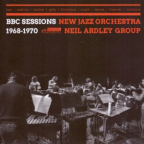 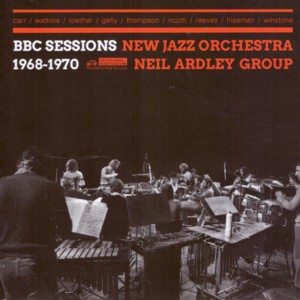 | NEW JAZZ ORCHESTRA / NEIL ARDLEY GROUP ~ BBC SESSIONS 1968-1970
RHYTHM AND BLUES 101 (Barcode: 5060331753834) ~ UK ~ Big Band Jazz
Recorded: 1968 - 1970 Released: 2024
This is an archival album, which presents recordings by two Orchestral Jazz ensembles, both led by the brilliant pianist / composer / arranger / bandleader Neil ArdleyFind albums by this artist. The album presents fourteen tracks, six by the New Jazz OrchestraFind albums by this artist (a.k.a. NJOFind albums by this artist), recorded in 1968 and eight by the Neil Ardley GroupFind albums by this artist, recorded in 1970. Five of the NJO tracks appear in a studio version on their 2nd studio album “Le Dejeuner Sur L`herbeFind albums with this title”. The first seven of the Neil Ardley Group tracks, which were composed by pianist / composer Mike TaylorFind albums by this artist and are a song cycle / Jazz & Poetry suite, were sadly never recorded in the studio and released on an album. Taylor tragically died just a few months before this music was recorded.
The lineup of these two ensembles reads like a Who’s Who of the British Jazz at the end of the 1960s, some still very young at the time, but already experienced musicians, who were going to shape the British Jazz scene in the decades to come. The NJO lineup includes Ardley as the leader / conductor, trumpeters Derek WatkinsFind albums by this artist, Henry LowtherFind albums by this artist and Ian CarrFind albums by this artist, saxophonists Dave GellyFind albums by this artist, Jim PhilipFind albums by this artist, Dick Heckstall-SmithFind albums by this artist and Barbara ThompsonFind albums by this artist, trombonists Chris PyneFind albums by this artist, Robin GardnerFind albums by this artist and Michael GibbsFind albums by this artist, tuba player George SmithFind albums by this artist, vibraphonist Frank RicottiFind albums by this artist, bassist Tony ReevesFind albums by this artist and drummer Jon HisemanFind albums by this artist. The Neil Ardley Group lineup includes Ardley on piano, vocalist Norma WinstoneFind albums by this artist, Carr, Gelly, Thompson, Ricotti, bassist Chris LaurenceFind albums by this artist and drummer Mike TravisFind albums by this artist. I rest my case…
The music, as expected, is absolutely sensational and reflects the vibrancy and ingenuity of the British Jazz scene at this pivotal period, when the modern British Jazz idiom was molded for decades to come. The specific idiosyncrasies and “Britishness” of the new epoch is simply encapsulated in every note played here. It is also a superb display of the individual talents of these magnificent musicians, those who are still with us and sadly those who departed, like Thompson and Hiseman, who met as members of the NJO and created one of the British Jazz “power couples” or Ardley and Carr, whose giant talents are deeply missed.
Overall, this is an absolute must have album for every British Jazz collector, especially in view of the fact that some of the music captured herein is not available anywhere else. For the cognoscenti, the album offers endless hints and interconnections, like a sensational version of the song “Jumping Off The Sun”, which became an anthem for the legendary ColosseumFind albums by this artist, which was founded by Hiseman and Heckstall-Smith, and included Reeves and Thompson, and so on…
| | Updated: 22/09/2024Posted: 21/09/2024 | CD 1 Recommend To A Friend |
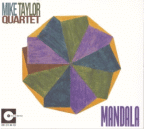 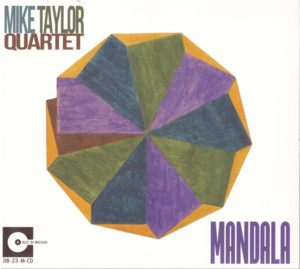 | MIKE TAYLOR ~ MANDALA
JAZZ IN BRITAIN 23 (Barcode: 5060774190173) ~ UK ~ Jazz
Recorded: 1965 Released: 2021
This is an archival album by British Jazz pianist / composer Mike TaylorFind albums by this artist, one of the mythical figures of the British Jazz scene, due to his tragic death at a ridiculous young age and an extremely limited recorded legacy. Taylor recorded only two albums (“PendulumFind albums with this title” 1966 and “TrioFind albums with this title” 1967) before he died at the age of 30 in 1969.
The album presents a live recording of five tracks, captured nine months before this lineup recorded Taylor’s debut album “Pendulum”. He is accompanied by saxophonist Dave TomlinFind albums by this artist, bassist Tony ReevesFind albums by this artist and drummer Jon HisemanFind albums by this artist. Of the five tracks one is a standard and four are original composition by Taylor, two of which appear on the tribute album “Mike Taylor RememberedFind albums with this title” by Neil ArdleyFind albums by this artist.
Although the music on this album is by far not as revolutionary or groundbreaking as on “Pendulum”, it is a time capsule of a work in progress, which eventually brought the quartet together into the perfection demonstrated on the debut album and which would make Taylor to crystalize his musical ideas to break the barriers of “swing” and John ColtraneFind albums by this artist’s influence, to achieve the Freedom the debut albums so potently demonstrates.
The sound quality of the recording is far from ideal, but certainly good enough to enjoy the music and hear some details. Hiseman is way up in the mix while Reeves is almost inaudible, and the piano is also far behind the saxophone, which takes most of the soloing space. The deconstruction of Thelonious MonkFind albums by this artist’s tune is definitely not as radical as on the debut, but comparing the two versions again shows a path Taylor and his quartet were taking.
Overall this is splendid document of the era and the formative years of independent British Jazz, which is not following the American influence any more than absolutely necessary. Tomlin bravely takes upon himself the front-line responsibilities, with Taylor pushing the music from behind, and obviously exploring new ground. The rhythm section is absolutely perfect for the job, with Reeves’ musicality and Hiseman’s technical brilliance laying out a firm basis for the two soloists.
However, the album also shows clearly how difficult it was to boldly step into the Free / open playing at this time, and the music is at all times strongly bonded to “swinging” at all cost, despite the relative freedom Taylor demonstrates while playing his odd chord sequences behind the swinging foreground.
Overall this is a first class discovery, which blissfully appears on record five and a half decades later, which should make every true British Jazz fan happy. Kudos to Jazz In Britain for digging this one out and bringing it up to the surface!
| | Updated: 06/06/2021Posted: 06/06/2021 | CD 1 Digipak Recommend To A Friend |
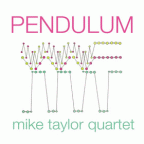  | MIKE TAYLOR ~ PENDULUM
SUNBEAM 5034 (Barcode: 5051125503414) ~ UK ~ Jazz
Recorded: 1965 Released: 2007
Pianist / composer Mike TaylorFind albums by this artist was the most enigmatic figure on the British Jazz scene in the 1960s. His genius was almost completely unknown to most and just a handful of close friends / musicians had the opportunity to work with him and hear his music. His eccentric personality, which bordered on the mentally unstable and his tragic death at a ridiculous young age cut his career short, leaving a legacy of just two albums, of which this is the first.
Anybody listening to this album will surely realize that this is one of the most daring and earliest modern British Jazz recordings and it parallels (in time and complexity) to the most advanced Avant Garde Jazz experiments happening across the Atlantic. Taylor’s unprecedented and unconventional approach to music was so ahead of its time that it’s truly mind-boggling.
The quartet playing on this recording includes Taylor on piano, Dave TomlinFind albums by this artist on soprano saxophone, Tony ReevesFind albums by this artist on bass and Jon HisemanFind albums by this artist on drums (the last two were of course to form the band ColosseumFind albums by this artist a few years later). The sound of the quartet is somewhat similar to John ColtraneFind albums by this artist’s legendary quartet, but Taylor plays quite differently than McCoy TynerFind albums by this artist of course. The music includes three Jazz standards (on what used to be Side A) and three original compositions by Taylor (on Side B).
The treatment of the standards is an absolute hair-raising experience, with Taylor de-composing / de-structuring the original harmony and re-assembling the pieces together in a completely new way. His original compositions are awesome as well, exposing a new musical universe. The entire album is a knockout from start to finish and listening to it over 40 years after it was recorded should still produce Goosebumps on every sensitive listener’s skin.
BTW people unaware of Jon Hiseman’s early Jazz days should check out his recording with another great British pianist Howard RileyFind albums by this artist on Howard’s debut album DiscussionsFind albums with this title. Taylor was about to record only one more album, called simply TrioFind albums with this title, with Jon Hiseman and Jack BruceFind albums by this artist on bass (Bruce was very much involved with the British Jazz scene before his adventure with CreamFind albums by this artist – see Jack’s debut album Things We LikeFind albums with this title), who was a friend of Taylor, as were the other members of the Graham Bond OrganizationFind albums by this artist. Also it’s really strange that Taylor’s fate was in many ways similar to that of Bond’s, both ending their lives in a suicide / accident, following a long period of mental instability. This album is a central piece of the puzzle forming the birth of modern British Jazz and no serious follower of that scene can afford not to have this album in his collection. Beyond essential!
| | Updated: 06/06/2021Posted: | CD 1 Remastered Essential Recommend To A Friend |
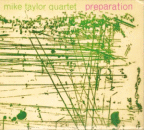 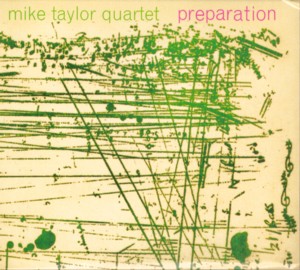 | MIKE TAYLOR ~ PREPARATION
SUNBEAM 1101 ~ UK ~ Jazz
Recorded: 1965 Released: 2021
This is an archival album by British Jazz pianist / composer Mike TaylorFind albums by this artist recorded in a quartet setting with saxophonist Dave TomlinFind albums by this artist, bassist Tony ReevesFind albums by this artist and drummer Jon HisemanFind albums by this artist. The album, taken from a rehearsal tape recorded by Reeves shortly before the recording of Taylor’s debut album “PendulumFind albums with this title”, presents five tracks in the same running order as the studio album, preceded by two tracks that do not appear on the album, together seven tracks, five of which are Taylor’s originals and two are standards. The album includes an extensive thirty-two pages long booklet, written by Richard Morton JackFind albums by this artist, which describes in great detail the sad story of Taylor’s life, his mental illness and tragically premature death. The tape, incidentally found by Reeves fifty-five years after it was recorded, is a mono recording, but the sound quality is not as poor as some people claim and the music can be heard loud and clear.
British Jazz enthusiasts will most probably have a copy of “Pendulum” already in their collection, so this album does not offer a great historical added value, but on the other hand, considering how little music Taylor managed to record during his lifetime, every note on this album becomes invaluable.
The music is of course a wonderful glimpse at the birth of modern British Jazz, influenced by the Free Jazz explosion in American Jazz at the time, but reshaped and domesticated into the proto-modernistic British experience, which eventually emancipated British Jazz from the American bondage. The performances are somewhat more spontaneous than those on the studio album and all showcase the great talents of the four musicians involved.
Overall, this is a most welcome addition to Mike Taylor’s limited recorded legacy and British Jazz fans surely will appreciate the fortunate incidents behind this release. Thank God for the invention of sound recording, which allows us to immortalize the music we all love so much. Wholeheartedly recommended!
| | Updated: 12/01/2022Posted: 12/01/2022 | CD 1 Remastered Recommend To A Friend |
|







